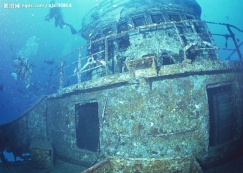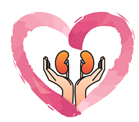题目内容
【题目】阅读理解。

In order to increase their job chances after college, Chinese students are turning to a special practice—Eiffel Tower nose jobs (鼻整形手术). The latest trend in plastic surgery promises to create a nose that is similar to the curve of the Eiffel Tower.
Surgeon Wang Xuming said: “We are influenced by the beauty of the Eiffel Tower. We are not content to just add something to the nose; we reconstruct it.” The surgery costs about US$ 10,000 and involves the enlarging of the nose using tissue from the forehead.
Hundreds of posters advertising the procedure are put up all over Chongqing city, where surgeon Xuming runs his private practice. They show a western-looking woman with an almost-to o-perfect nose, against an outline of the Eiffel Tower.
Interestingly, many young women in China are eager to achieve a western appearance, as they believe it will give them an advantage in the highly competitive job market. “Some students face a lot of employment pressure after graduation. If their facial features are good, they’ll have more chances of finding a job,” said surgeon Xuming. “We’ve had students getting the Eiffel Tower nose; it’s helped them a lot.”
Apparently, Chinese employers are quite particular about appearances and prefer attractive candidates. Some of them even go as far as putting height and weight requirements in their employment ads. Plastic surgeons across the country are reporting an increase in the number of students choosing beaut “improvement”.
According to a Mr. Li, hospital manager at surgeon Xuming’s clinic, most of their customers are female and the bill is taken care of by the family. “They usually come in with their mothers, and tend to be from well-off backgrounds.” he said.
Personally, I don’t think it so important to “improve” our appearance as long as we are skilled at our jobs. We can’t decide how we look, but we can decide how well we live and work.
【1】Why do Chinese college students choose to have a nose operation?
A. To have more chances of getting a job.
B. To gain a real westerner appearance.
C. To Take good care of their family.
D. To look like the Eiffel Tower.
【2】What is mainly talked about in Paragraph 3?
A. The city of Chongqing.
B. A plastic surgery procedure.
C. The posters advertising the surgery.
D. Xuming’s private practice.
【3】What can we learn from Mr. Li’s words?
A. Most families can’t afford the expensive operation.
B. Their customers are usually from wealthy families.
C. Patients can be well looked after at the clinic.
D. The number of plastic surgeons is increasing.
【4】Which of the following will the author probably agree with?
A. Chinese employers only care about their employees’ appearance.
B. Chinese students are content with the shape of their noses.
C. A western face looks prettier than a Chinese one.
D. Skills at work speak louder than appearance.
【答案】
【1】A
【2】C
【3】B
【4】D
【解析】
本文属于议论文阅读,介绍了现在中国很多学生未来找到好工作就行整容手术这一社会现象并发表了个人观点。
【1】A 细节理解题。根据文章第一句In order to increase their job chances after college, Chinese students are turning to a special practice—Eiffel Tower nose jobs (鼻整形手术).为了获得更好的工作机会,中国的学生真正求助整形手术。说明学生整形是为了得到更多的工作机会。故A正确。
【2】C 段落大意题。根据本段第一句Hundreds of posters advertising the procedure are put up all over Chongqing city, where surgeon Xuming runs his private practice.可知成百上千的广告海报被张贴在重庆市里。第二句中描述的海拔的内容,说明本书主要介绍刊登手术的海报。故C正确。
【3】B 细节理解题。根据第六段最后一句“They usually come in with their mothers, and tend to be from well-off backgrounds.” he said.可知Mr Li的顾客通常都来自家背景比较富有的家庭。故B正确。
【4】D 推理判断题。根据文章最后一段Personally, I don’t think it so important to “improve” our appearance as long as we are skilled at our jobs. We can’t decide how we look, but we can decide how well we live and work.可知作者认为外貌并不重要,重要的是我们在工作中的表现和我们的工作技能。故D项正确。

 浙江名校名师金卷系列答案
浙江名校名师金卷系列答案



